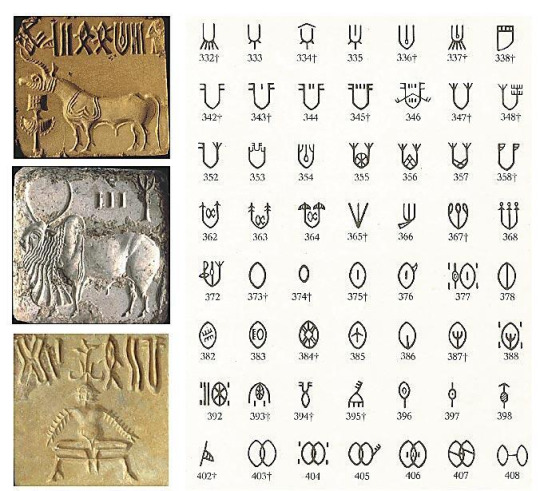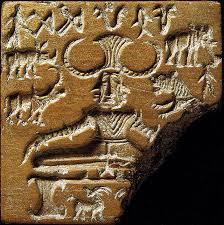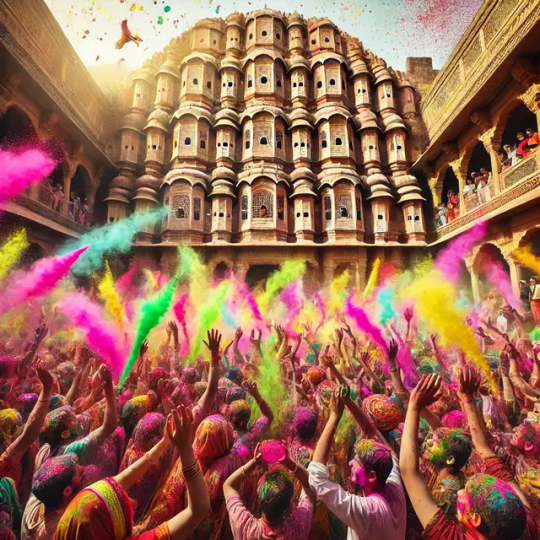#Indian Scriptures
Explore tagged Tumblr posts
Text
Time calculation in The Ling Mahapuran
Old Indian scriptures and literature are little explored. Majority of the people who follow Hinduism barely get in to the depth of it. Apart from religious values, it contains very rich information which help up to get an idea about the advancement of the civilization back then. If you open up any of the book and start reading, at the first glance it would appear a religious text. As you continue…
#ancient hindu scriptures#Ancient Knowledge System#Brahma#Exploring Hindu Puranas#Gurukul Education System#Hindu Cosmology#Hindu Science and Astronomy#Hindu Scriptural Insights#Hindu Time Calculation#Hindusim#Indian Literature#Indian Religious Texts#Indian Scriptures#Indus valley civilization#Puranas#Purans#Sacred Hindu Texts#Spiritual Dimensions in Hinduism#Spiritual Wisdom#The Ling Mahapuran#Time calculation in Hindusim#Vedas and Puranas#Vedic India#Vedic Knowledge of Time#Vedic Science#Vedic Teachings#Vedic times#Vishnu#Yuga
2 notes
·
View notes
Text
Did Ancient Texts Predict the Big Bang? Shocking Parallels in the Bhagavatam!
1. Introduction For centuries, humanity has looked to the skies in search of answers about the universe’s origin. Scientists gave us the Big Bang theory, while sages from ancient India offered cosmological insights in scriptures like the Bhagavatam. Could it be that these ancient Indian texts described the Big Bang long before science caught up? The idea may sound outrageous at first, but when…
#ancient predictions#ancient science#bhagavatam#big bang theory#cosmology in hinduism#creation of universe#Hindu mythology#indian scriptures#puranas and science#spiritual cosmology#timeless wisdom#vedas and physics#Vedic cosmology
0 notes
Text
When did Hindus become so insecure? I just watched a video where a group of people were hitting a Christian woman and forcing her to say "Jai Shree Ram." Before you think I’m against Hindus, know that I’m a Hindu too. Many of the people who loudly shout "Jai Shree Ram" likely haven’t even read a single Veda in their entire life. I may not know much about the Vedas either, but I do know this: if they had read even one verse of the Bhagavad Gita, they would never insult or harm someone for following a different religion.
63 notes
·
View notes
Text
Translating the Harappan Script
Translating the Indus Valley script remains a formidable challenge, primarily because it has not been definitively deciphered yet. Scholars are still working on various hypotheses and approaches, but no one has succeeded in providing a definitive translation. However, there are several methods and steps that researchers follow to try and make sense of the script:
1. Collect and Catalog Inscriptions
The first step is gathering and cataloging all the known inscriptions of the Indus Valley script. This includes texts found on seals, pottery, tablets, and other artifacts. Researchers try to identify recurring patterns and symbols in these inscriptions, which might represent words, phrases, or concepts.
2. Identify and Classify Symbols
The Indus script contains hundreds of unique symbols. These symbols are thought to represent:
Pictograms: Images or symbols that may represent objects or ideas.
Phonetic signs: Symbols that may represent sounds or syllables (like in a syllabary or alphabet).
Ideograms: Symbols representing ideas or concepts.
Researchers try to classify these symbols, determine how they might be used in different contexts, and look for patterns in their usage (e.g., recurring symbols or clusters of symbols).

3. Look for Repetitive Patterns
The most promising approach to deciphering the script is recognizing recurring sequences. If certain symbols appear frequently or together, they might represent common words or grammatical structures. For instance, some symbols consistently appear together on seals, suggesting they might represent a name or title. Identifying such repeated patterns is a major part of the effort to decode the script.
4. Hypothesize About Phonetic Values
Since there’s no known Rosetta Stone to directly link the Indus script to a known language, some researchers hypothesize that the script might represent sounds (like the alphabetic systems) or syllables (like the syllabaries). They analyze the way symbols are combined and try to propose phonetic values for certain characters. This step is speculative, but it's a vital area of research.
5. Compare with Known Languages
Some scholars attempt to compare the Indus script with the known languages of the region. The two main hypotheses are:
Dravidian Hypothesis: Some suggest that the language might be related to the Dravidian languages spoken in southern India. However, no clear connections have been established.
Austroasiatic or Indo-European Hypothesis: There are also theories suggesting that the language could be related to other language families, though these ideas have not gained broad acceptance.
Comparing the script with related languages is difficult, though, as no direct linguistic evidence exists to link the Indus Valley script with any language family.

6. Use Computational Tools
Modern computational techniques, such as statistical analysis and pattern recognition, are being used to analyze the script. Researchers create algorithms to look for statistical patterns in the frequency and combinations of symbols, attempting to uncover hidden linguistic structures. These approaches are still in early stages, but they could provide a breakthrough in understanding the structure of the script.
7. Look for Contextual Clues
Context is essential in understanding any written language. Researchers study the locations and types of objects the inscriptions are found on. For example, most Indus script inscriptions are found on seals used for trade, which could suggest that the script was primarily used for administrative or commercial purposes. Looking at the context of the inscriptions might provide clues about their meaning.
8. Consider the Social and Cultural Context
Finally, understanding the social, cultural, and historical context of the Indus Valley civilization is crucial. The script was likely used to convey information about trade, religion, administration, and possibly mythology. Knowledge of the civilization’s practices, beliefs, and economy could provide additional insights into what the script might represent.

Pashupati Seal
Challenges and Current Status
No Bilingual Inscriptions: Unlike Egyptian hieroglyphs, there are no known bilingual inscriptions that could act as a “key” to the script.
Fragmentary Data: Most inscriptions are very short, often only a few characters long, making it difficult to gather enough context to understand their meaning.
Multiple Interpretations: There are various competing theories about the nature of the script, its language, and its function. The lack of consensus on these fundamental issues complicates efforts at translation.
Conclusion
Despite these efforts, translating the Indus script remains a work in progress. While various researchers have proposed partial solutions or interpretations, none of them have been universally accepted. As new data and computational tools emerge, it’s possible that scholars might come closer to deciphering the script, but for now, it remains one of the great mysteries of ancient writing systems.

#history#archaeology#indian history#indian#indus valley#culture#museum#scripture#epigraph#linguistics#inscription
16 notes
·
View notes
Text
"Nothing can harm you as much as your own thoughts unguarded"

Siddhartha Gautama, most commonly referred to as the Buddha, was a wandering ascetic and religious teacher who lived in South Asia, during the 6th or 5th century BCE and founded Buddhism.
Founder of Buddhism: Siddhartha Gautama, also known as the Buddha, founded Buddhism, one of the world's major religions, based on his teachings about overcoming suffering and achieving enlightenment.
Born as a Prince: He was born in Lumbini (modern-day Nepal) as a prince of the Shakya clan around the 5th to 6th century BCE, shielded from the hardships of the world.
The Four Sights: At age 29, he left his palace and encountered "The Four Sights"—an old man, a sick man, a corpse, and a wandering ascetic—which inspired him to seek answers to life's suffering.
Attained Enlightenment: After years of ascetic practices, he meditated under the Bodhi tree in Bodh Gaya and achieved enlightenment, becoming "the Buddha," or "the Awakened One.
"Teachings of the Middle Way: Buddha advocated the "Middle Way," avoiding extremes of indulgence and self-denial, and shared the Four Noble Truths and the Eightfold Path as the foundation of his teachings.
#Buddhism#Enlightenment#Bodhi Tree#Four Noble Truths#Eightfold Path#Middle Way#Meditation#Asceticism#Dharma#Nirvana#Shakya Clan#Lumbini#Bodh Gaya#Four Sights#Indian Philosophy#Spiritual Teacher#Karma#Sangha#Buddhist Scriptures#Siddhartha
8 notes
·
View notes
Text










Hampi: Birth place of lord Hanuman
#hampi#indiantemples#indian history#indian culture#indian#historical places#ancient history#abandoned places#raw photography#artists on tumblr#photooftheday#photography#photographers on tumblr#street photography#phone photography#google pixel#cultural heritage#monument#indian goddess#hinduism#hindu gods#temple#hindu temple#hindu scriptures#southindia
2 notes
·
View notes
Text
Dharmic Religionss: A Journey into Ancient Beliefs
Dharmic Religionss is a term used to describe a group of religions that originated in the Indian subcontinent. These include Hinduism, Buddhism, Jainism, and Sikhism. These religions share common beliefs and practices, focusing on the concept of "dharma," which means duty, righteousness, and moral law. Let's explore the fascinating world of Dharmic Religionss and understand how they shape the lives of millions of people.

Hinduism: The Oldest Dharmic Religion
Hinduism is the oldest of the Dharmic Religions, with roots that go back over 4,000 years. It is a complex religion with a variety of gods and goddesses, rituals, and philosophies. The core belief in Hinduism is the idea of dharma, which means living in accordance with one's duty and righteousness. Hindus believe in reincarnation, where the soul is reborn in a new body after death. The ultimate goal is to achieve moksha, or liberation from the cycle of rebirth.
Hinduism has many sacred texts, including the Vedas, Upanishads, and the Bhagavad Gita. These texts provide guidance on how to live a righteous life. Temples, festivals, and pilgrimages are also important aspects of Hindu worship. One popular festival is Diwali, the festival of lights, which symbolizes the victory of light over darkness.
Buddhism: The Path to Enlightenment
Buddhism is another significant Dharmic Religion. It was founded by Siddhartha Gautama, known as the Buddha, in the 5th century BCE. Buddhism teaches that life is full of suffering caused by desire and attachment. To overcome this suffering, one must follow the Eightfold Path, which includes right understanding, right thought, right speech, right action, right livelihood, right effort, right mindfulness, and right concentration.
Buddhists seek to attain Nirvana, a state of ultimate peace and enlightenment. Meditation is a key practice in Buddhism, helping individuals to develop mindfulness and insight. The teachings of the Buddha are collected in the Tripitaka, also known as the Pali Canon.
Jainism: The Path of Non-Violence
Jainism is another ancient Dharmic Religion that emphasizes non-violence (ahimsa) and self-discipline. Founded by Mahavira in the 6th century BCE, Jainism teaches that every living being has a soul and deserves respect. Jains follow five main vows: non-violence, truthfulness, non-stealing, celibacy, and non-possession.
Jain monks and nuns lead a strict ascetic lifestyle, renouncing worldly possessions and practicing intense meditation. Lay Jains also follow these principles, though in a less rigorous manner. Jain temples, known for their intricate architecture and sculptures, are places of worship and meditation.
Sikhism: The Religion of the Gurus
Sikhism is the youngest of the Dharmic Religionss, founded in the 15th century by Guru Nanak Dev Ji. Sikhism emphasizes devotion to one God, equality, and service to humanity. The teachings of the ten Sikh Gurus are compiled in the Guru Granth Sahib, the holy scripture of Sikhism.
Sikhs gather for worship in Gurdwaras, where they participate in prayer, singing hymns, and community service. One key practice in Sikhism is the Langar, a community kitchen where free meals are served to all, regardless of religion or background. This practice embodies the Sikh values of equality and selfless service.
The Influence of Dharmic Religionss
Dharmic Religionss have a profound impact on the culture and daily life of millions of people. They influence art, literature, music, and social customs. Festivals like Diwali, Vesak, Mahavir Jayanti, and Vaisakhi bring communities together, fostering a sense of unity and celebration.
Furthermore, the principles of dharma, non-violence, and compassion taught by these religions contribute to a more harmonious society. The emphasis on meditation and mindfulness has also gained global recognition, promoting mental well-being and inner peace.
Conclusion
Dharmic Religionss offer a rich tapestry of beliefs and practices that guide individuals on a path of righteousness and spiritual growth. Whether it's the ancient rituals of Hinduism, the mindful practices of Buddhism, the non-violent principles of Jainism, or the devotional worship in Sikhism, each religion provides a unique way to connect with the divine and achieve a meaningful life.
Exploring Dharmic Religionss helps us appreciate the diversity and depth of human spirituality. By understanding and respecting these ancient traditions, we can foster greater tolerance and harmony in our world.
For more insights into Dharmic Religions and their impact on modern life, visit omtvlive. Here, you will find a wealth of information and resources to deepen your understanding and appreciation of these profound spiritual paths. Remember, the journey to spiritual enlightenment and inner peace is a continuous process, and Dharmic Religionss offer timeless wisdom to guide us along the way. So, stay curious, keep exploring, and let omtvlive be your companion in this spiritual journey.
#vedic philosophy#classical hinduism#hindu philosophy#hindu religion philosophy#hindu vedanta#jnana yoga#advaita vedanta philosophy#advaita vedanta in hindi#vaishnava tradition#jain religion#tantric traditions#vedic religion#devotional worship#modern hinduism#vedic scriptures#spiritual realization#dharmic religions#indian religions
2 notes
·
View notes
Text
Understanding Devotional Worship: A Path to Spiritual Fulfillment
Devotional worship is a profound practice that has been a part of human culture for centuries. It is a way for individuals to connect deeply with the divine, expressing their love, reverence, and faith. Whether you are new to this practice or seeking to deepen your understanding, this guide will provide insights into the essence of devotional worship and how platforms like omtvlive can enhance your spiritual journey.

What is Devotional Worship?
Devotional worship refers to acts of devotion directed towards a deity or higher power. These acts can include prayer, singing hymns, chanting mantras, meditating, and performing rituals. The purpose of devotional worship is to express love and gratitude to the divine, seek guidance, and find spiritual solace.
Benefits of Devotional Worship
Inner Peace: Engaging in devotional worship helps calm the mind and bring inner peace. It provides a break from daily stresses and allows individuals to focus on the divine presence.
Spiritual Growth: Regular practice fosters spiritual growth. It deepens one's faith, enhances understanding of spiritual principles, and strengthens the connection with the divine.
Emotional Well-Being: Devotional worship can be a source of comfort during challenging times. It helps in coping with emotions like fear, anxiety, and sadness by providing a sense of hope and reassurance.
Community Connection: Participating in devotional worship within a community can create a sense of belonging and support. It brings people together in a shared expression of faith and devotion.
Forms of Devotional Worship
Devotional worship can take many forms, each with its own unique practices and traditions. Here are some common forms:
Prayer: A fundamental aspect of devotional worship, prayer involves communicating with the divine. It can be a request for help, an expression of gratitude, or simply a way to feel closer to the higher power.
Chanting and Singing: Chanting mantras or singing hymns and bhajans are powerful ways to engage in devotional worship. The repetitive nature of chanting helps focus the mind and create a meditative state.
Meditation: Meditation is a silent form of devotional worship where individuals sit quietly, focus on the divine, and cultivate a sense of inner stillness and connection.
Rituals and Offerings: Performing rituals and making offerings are traditional practices in many religions. These acts symbolize devotion and reverence towards the deity.
Pilgrimages: Traveling to sacred sites and participating in religious festivals are also forms of devotional worship. These journeys often provide a deep sense of spiritual renewal.
Enhancing Devotional Worship with Omtvlive
In today’s digital age, accessing resources for devotional worship has become easier than ever. Platforms like omtvlive play a crucial role in bringing devotional content to people worldwide. Here’s how omtvlive can enhance your devotional worship experience:
Live Streaming: Omtvlive offers live streaming of religious ceremonies, prayers, and spiritual discourses. This allows you to participate in devotional worship from the comfort of your home, especially if you cannot visit a place of worship.
On-Demand Content: The platform provides a wide range of on-demand content, including recorded prayers, bhajans, and spiritual talks. You can access these resources anytime, making it convenient to incorporate devotional worship into your daily routine.
Community Engagement: Omtvlive fosters a sense of community by connecting viewers with like-minded individuals. You can participate in live chats, discussions, and virtual prayer sessions, creating a shared space for devotion and support.
Educational Resources: The platform offers educational content that helps deepen your understanding of various aspects of devotional worship. This can include explanations of rituals, the significance of festivals, and teachings from spiritual leaders.
Diverse Practices: Omtvlive caters to a wide range of religious and spiritual traditions. This diversity allows you to explore different forms of devotional worship and find what resonates most with your spiritual path.
Tips for Deepening Your Devotional Worship
If you want to deepen your devotional worship, consider these tips:
Consistency: Make devotional worship a regular part of your routine. Consistent practice helps cultivate a stronger connection with the divine.
Sincerity: Approach devotional worship with sincerity and an open heart. Genuine devotion enhances the spiritual experience.
Learn and Explore: Use platforms like omtvlive to learn about different practices and traditions. Exploring various forms of devotional worship can enrich your spiritual journey.
Create a Sacred Space: Designate a quiet, clean space in your home for devotional worship. This can help you focus and create a peaceful environment for your practice.
Connect with Others: Engage with your spiritual community, whether online through omtvlive or in person. Sharing your experiences and learning from others can be incredibly enriching.
Conclusion
Devotional worship is a beautiful and meaningful way to connect with the divine and nurture your spiritual growth. It offers numerous benefits, from inner peace to a stronger sense of community. Platforms like omtvlive make it easier than ever to access devotional content and enhance your practice. By incorporating devotional worship into your daily life and exploring the resources available through omtvlive, you can embark on a fulfilling spiritual journey filled with love, devotion, and enlightenment.
#vedic philosophy#classical hinduism#hindu philosophy#hindu religion philosophy#hindu vedanta#jnana yoga#advaita vedanta philosophy#advaita vedanta in hindi#vaishnava tradition#jain religion#tantric traditions#vedic religion#devotional worship#modern hinduism#vedic scriptures#spiritual realization#dharmic religions#indian religions
2 notes
·
View notes
Text

#aesthetic#beautiful#mandala#mandala art#indian#new year#bible verse#bible#bible scripture#biblical scripture#jesus christ#christianity
2 notes
·
View notes
Text

#courage
#control of sense
#purity
#intellect
#controls of organs
#patience
#non-stealing
#truthfulness
#knowledge
#free from anger
2 notes
·
View notes
Text
Holi is Not a Vedic Festival: A Journey Through the Oldest Scriptures
Holi, India's festival of colors, is widely celebrated as a joyous occasion of renewal and social unity. However, the assumption that Holi has its roots in the Vedic period does not hold up under scrutiny. A careful examination of the oldest scriptures—the Vedas—reveals no reference to this festival, suggesting that its origins lie in later historical and religious developments rather than in the early Vedic tradition. By tracing its absence in the Vedas and its emergence in post-Vedic texts, we can better understand how Holi evolved into its present form.

#Holi Vedic origins#is Holi a Vedic festival#history of Holi#Holi in Vedas#Holi in Hindu scriptures#Holika Dahan#Krishna and Holi#Puranas and Holi#Hindu festival history#Indian mythology
0 notes
Text
हजरत बाबा आदम की कहानी सुनिए बाखबर की जुबानी। only Al Kabir Islamic chan...
youtube
#youtube#indian music#nature#travel blog#art#adobe#adventure#procreate#hindustan#sanatandharma#muslim#allah#allah is kabir#bihar news#bible scripture#bible study#bible lessons#god
0 notes
Text
"Tune as the Sitar neither low nor high. And we will dance away the hearts of men"

Siddhartha Gautama, most commonly referred to as the Buddha, was a wandering ascetic and religious teacher who lived in South Asia, during the 6th or 5th century BCE and founded Buddhism.
Founder of Buddhism: Siddhartha Gautama, also known as the Buddha, founded Buddhism, one of the world's major religions, based on his teachings about overcoming suffering and achieving enlightenment.
Born as a Prince: He was born in Lumbini (modern-day Nepal) as a prince of the Shakya clan around the 5th to 6th century BCE, shielded from the hardships of the world.
The Four Sights: At age 29, he left his palace and encountered "The Four Sights"—an old man, a sick man, a corpse, and a wandering ascetic—which inspired him to seek answers to life's suffering.
Attained Enlightenment: After years of ascetic practices, he meditated under the Bodhi tree in Bodh Gaya and achieved enlightenment, becoming "the Buddha," or "the Awakened One.
"Teachings of the Middle Way: Buddha advocated the "Middle Way," avoiding extremes of indulgence and self-denial, and shared the Four Noble Truths and the Eightfold Path as the foundation of his teachings.
#Buddhism#Enlightenment#Bodhi Tree#Four Noble Truths#Eightfold Path#Middle Way#Meditation#Asceticism#Dharma#Nirvana#Shakya Clan#Lumbini#Bodh Gaya#Four Sights#Indian Philosophy#Spiritual Teacher#Karma#Sangha#Buddhist Scriptures#Siddhartha
6 notes
·
View notes
Text
Wisdom of Ancient Indian Education: The 8 Limbs of Yoga and Beyond
Since times before the antiquities, Indian education system has been very robust. One of the core objective was to shape the individual and the society with highest virtues. How an individual should be is mentioned in various scriptures like Ved, Puran, Upanishad and others. In present times, one may consider these texts as purely religious scriptures. It is a common belief of most of the people,…

View On WordPress
#Ancient Civilizations#ancient hindu scriptures#Ancient India#ancient indian science#Ancient Knowledge#Ancient Knowledge System#Ancient texts#cultural heritage#Culture#Exploring Hindu Puranas#Hindu civilization#Hindu Scriptural Insights#Hindusim#India&039;s heritage#Indian education system#Indian Religious Texts#Lost Indian Knowledge#qualityoflife#Rediscovering Indian culture#Sacred Hindu Texts#Spiritual Wisdom#Yam&Niyam#yoga#yogaphilosophy
0 notes
Text
The Indian scriptures way! with Manasi Ekkundi
#podcast#india#indian#scriptures#science#research#experiments#yourstoryistheway#weekend#listen#Spotify
0 notes
Text
Ramayana No. 10: Narada: The Celestial Sage and Divine Messenger of the Ramayana
As I continue my journey through the Ramayana, I’ve chosen to explore this epic using multiple versions: the abridged Valmiki translation, the comprehensive Gita Press edition, and the detailed Debroy translation. This approach allows me to compare different interpretations and uncover nuances that might otherwise go unnoticed. For those interested in exploring these different versions, both the…

View On WordPress
#ancient scriptures#Bhakti#comparative religion#comparative study#Dharma#divine messenger#Divine Wisdom#epic literature#Gita Press#Hindu epics#Hindu mythology#Hindu sages#Hindu texts#Hindu tradition#Indian literature#Indian spirituality#Mythology#Narada#Narada Bhakti Sutra#Ramayana#religious studies#righteous living#Sacred texts#sages#spiritual growth#spiritual guide#Spiritual teachings#Valmiki#Vedic wisdom
0 notes